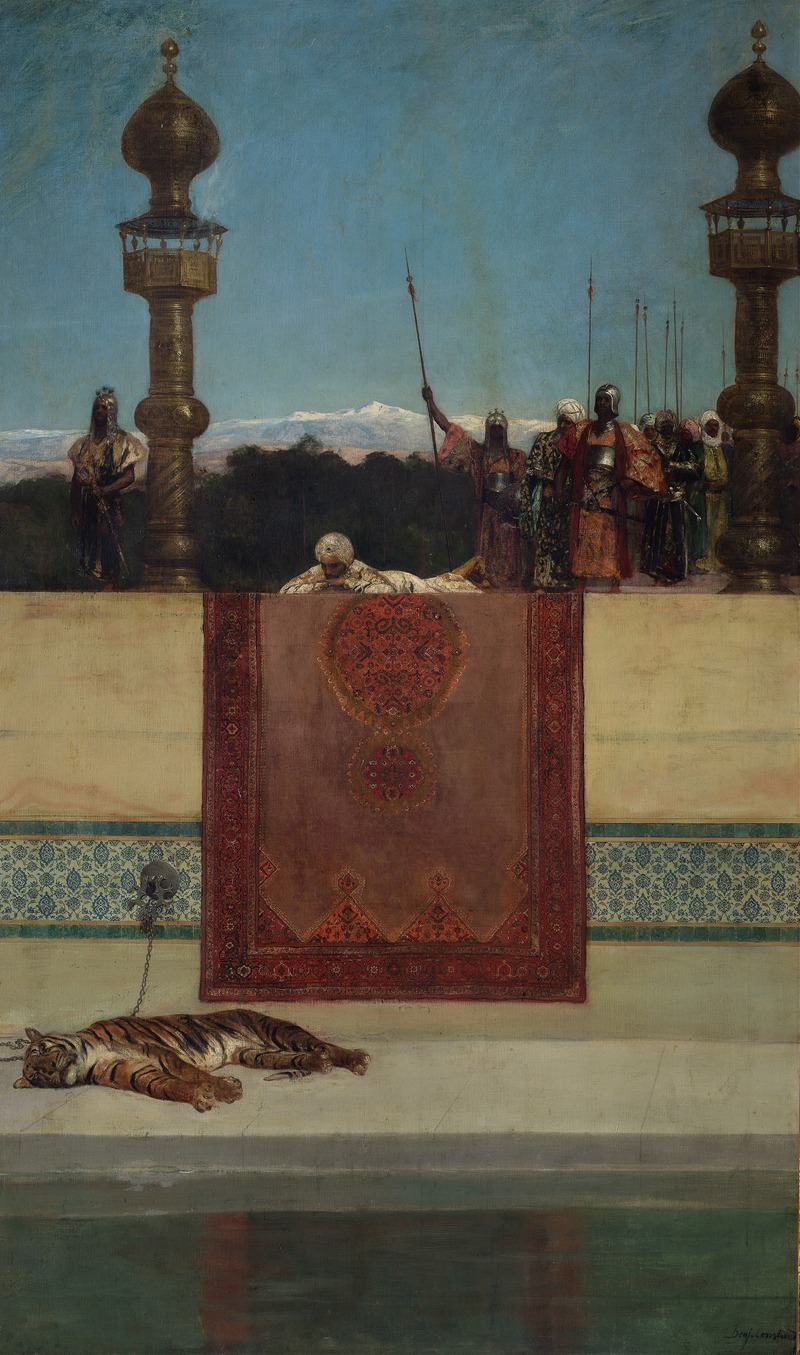
The Sultan’s Tiger
A hand-painted replica of Jean-Joseph-Benjamin Constant’s masterpiece The Sultan’s Tiger, meticulously crafted by professional artists to capture the true essence of the original. Each piece is created with museum-quality canvas and rare mineral pigments, carefully painted by experienced artists with delicate brushstrokes and rich, layered colors to perfectly recreate the texture of the original artwork. Unlike machine-printed reproductions, this hand-painted version brings the painting to life, infused with the artist’s emotions and skill in every stroke. Whether for personal collection or home decoration, it instantly elevates the artistic atmosphere of any space.
"The Sultan’s Tiger" is a painting by the French artist Jean-Joseph-Benjamin Constant, who was known for his Orientalist works. Born in 1845, Constant was a prominent figure in the 19th-century art scene, particularly celebrated for his vivid and exotic depictions of the East, which were highly popular in Europe during that time.
The painting "The Sultan’s Tiger" exemplifies Constant's fascination with Orientalist themes, which often romanticized and dramatized the cultures and settings of the Middle East and North Africa. This fascination was part of a broader trend among European artists and writers of the 19th century, who were captivated by the perceived exoticism and mystery of these regions.
In "The Sultan’s Tiger," Constant portrays a regal and opulent scene featuring a sultan and his majestic tiger. The painting is notable for its rich detail and vibrant use of color, which bring the scene to life. The sultan, dressed in luxurious garments, is depicted with an air of authority and grandeur, while the tiger, a symbol of power and nobility, adds an element of wildness and exoticism to the composition.
Constant's skillful use of light and shadow enhances the dramatic effect of the painting, creating a sense of depth and realism. The intricate patterns and textures of the sultan's attire, as well as the lush surroundings, reflect Constant's meticulous attention to detail and his ability to capture the opulence of the scene.
"The Sultan’s Tiger" is a prime example of Orientalist art, which often blended elements of fantasy and reality to create captivating and imaginative works. While such paintings were celebrated for their beauty and craftsmanship, they also reflected the colonial attitudes and stereotypes of the time, often portraying Eastern cultures through a Western lens.
Jean-Joseph-Benjamin Constant's work, including "The Sultan’s Tiger," remains significant in the study of Orientalist art, offering insights into the cultural and artistic exchanges between Europe and the East during the 19th century. His paintings continue to be appreciated for their artistic merit and historical context, providing a window into the ways in which the East was perceived and represented in Western art.
Overall, "The Sultan’s Tiger" stands as a testament to Constant's talent and his contribution to the Orientalist movement, capturing the imagination of viewers with its vivid portrayal of a sultan and his majestic tiger.


















